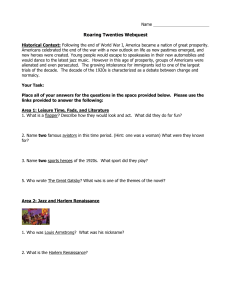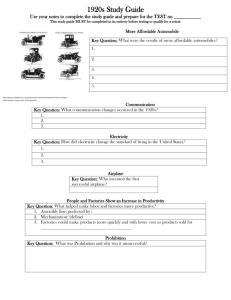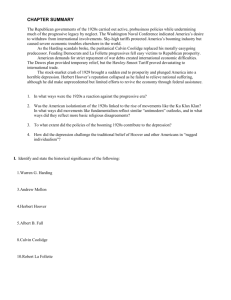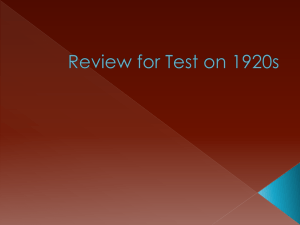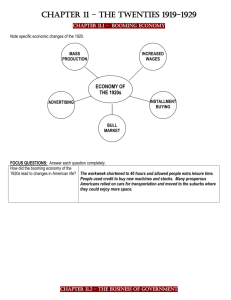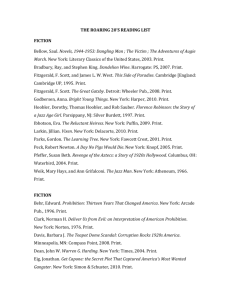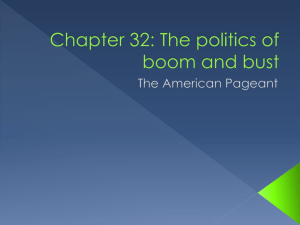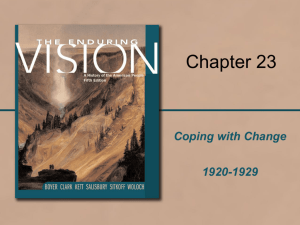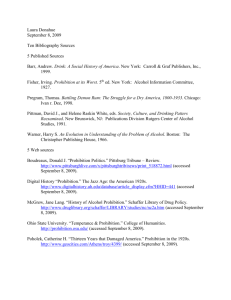U - Libertyville High School
advertisement
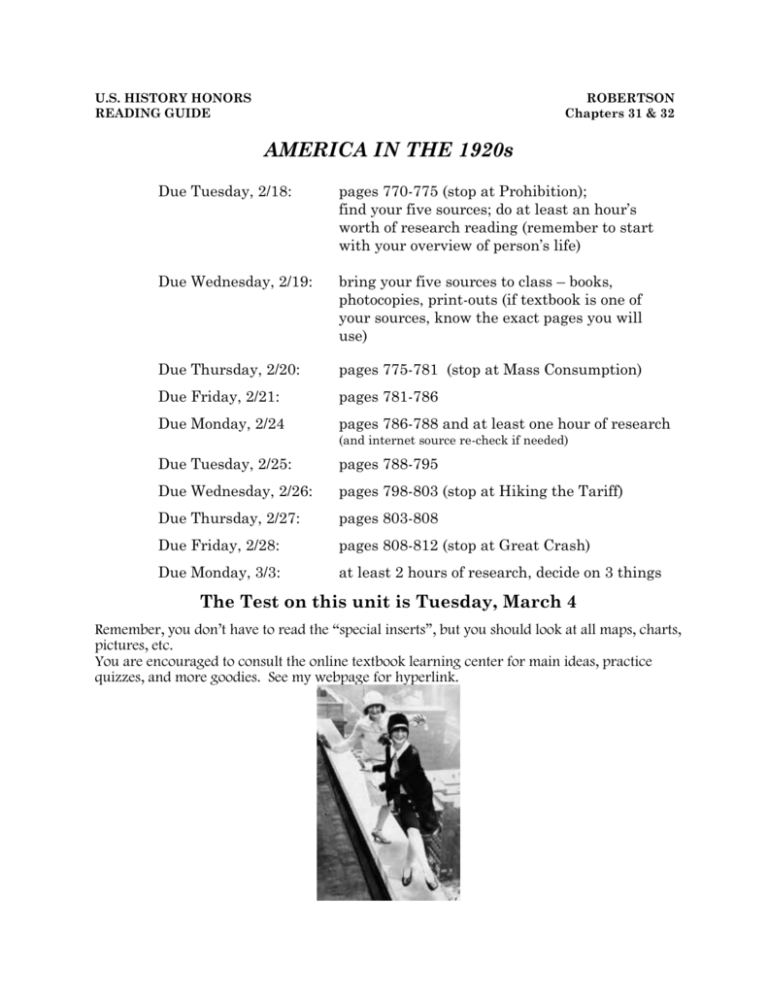
U.S. HISTORY HONORS READING GUIDE ROBERTSON Chapters 31 & 32 AMERICA IN THE 1920s Due Tuesday, 2/18: pages 770-775 (stop at Prohibition); find your five sources; do at least an hour’s worth of research reading (remember to start with your overview of person’s life) Due Wednesday, 2/19: bring your five sources to class – books, photocopies, print-outs (if textbook is one of your sources, know the exact pages you will use) Due Thursday, 2/20: pages 775-781 (stop at Mass Consumption) Due Friday, 2/21: pages 781-786 Due Monday, 2/24 pages 786-788 and at least one hour of research (and internet source re-check if needed) Due Tuesday, 2/25: pages 788-795 Due Wednesday, 2/26: pages 798-803 (stop at Hiking the Tariff) Due Thursday, 2/27: pages 803-808 Due Friday, 2/28: pages 808-812 (stop at Great Crash) Due Monday, 3/3: at least 2 hours of research, decide on 3 things The Test on this unit is Tuesday, March 4 Remember, you don’t have to read the “special inserts”, but you should look at all maps, charts, pictures, etc. You are encouraged to consult the online textbook learning center for main ideas, practice quizzes, and more goodies. See my webpage for hyperlink. Important Terms Carefully read the entire heading section first, then refer to the following to check for comprehension and review the material. For each term you should be able to explain the applicable who, what, why, where, when, and how details. Remember that while you may take notes in whatever manner you find helpful to your comprehension and retention of material, only hand-written notes on separate sheets of paper may be used for the occasional open-note quiz. Chapter 32: The Politics of Boom and Bust Harding’s flaws the Ohio Gang goals of the Old Guard Supreme Court actions Interstate Commerce Commission trade associations union defeats the American Legion Adjusted Compensation Act problems preventing isolationism Washington Conference Kellogg-Briand Pact Fordney-McCumber Tariff effects of high tariff policies Veterans Bureau scandal Teapot Dome scandal Harding’s death personality of Coolidge Coolidge and business problems of farmers McNary-Haugen Bill European debt problems Dawes Plan Al Smith campaign of 1928 outcome of 1928 election late 1920s prosperity Agricultural Marketing Act Hawley Smoot Tariff Chapter 31: American Life in the “Roaring Twenties” Red Scare A. Mitchell Palmer anti-red laws anti-union mood and actions Sacco and Vanzetti the new Ku Klux Klan Emergency Quota Act of 1921 Immigration Act of 1924, significance / opposition implementation of Prohibition disregard for Prohibition positive effects of Prohibition Prohibition and crime Lindbergh Law high school graduation rate in 1920s the Scopes Trial William Jennings Bryan Clarence Darrow Fundamentalism buying on credit Scientific Management Henry Ford impact of auto industry the Wright Brothers Charles Lindbergh Guglielmo Marconi effects of radio Birth of a Nation The Jazz Singer development of the movie industry effects of mass media flappers changing sexual behavior Sigmund Freud origins of Jazz Harlem Marcus Garvey general themes and trends in literature Harlem Renaissance Frank Lloyd Wright buying stock on-margin Bureau of the Budget Andrew Mellon and his tax policies



